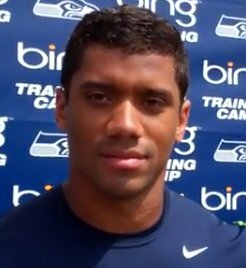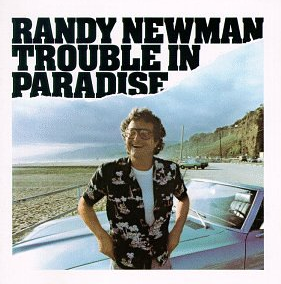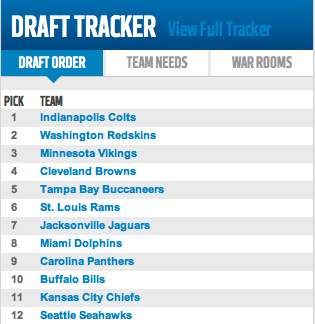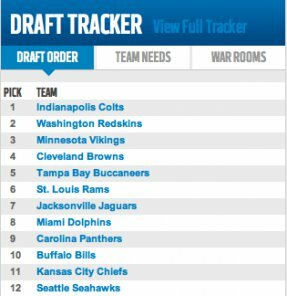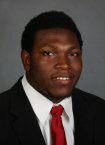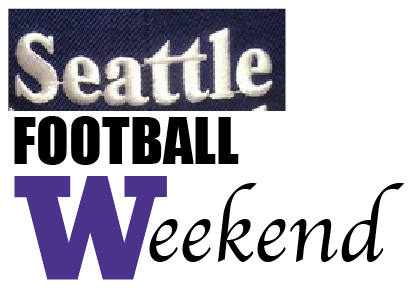 Both the Huskies and the Seahawks are where we thought they’d be on September 17th–the Huskies at 2-1, and the Seahawks at 1-1. Our two favorite teams won their games by a combined 59 points this weekend, the Huskies winning 52-13 over lower-division Portland State the Seahawks 27-7 over the favored Dallas Cowboys. During the Husky game, I felt so carefree I went to the Mobile Food Rodeo in the third quarter. Happily chomping on food truck falafel will soon be replaced by nervously biting my nails, though, as the teams both enter the toughest parts of their respective schedules.
Both the Huskies and the Seahawks are where we thought they’d be on September 17th–the Huskies at 2-1, and the Seahawks at 1-1. Our two favorite teams won their games by a combined 59 points this weekend, the Huskies winning 52-13 over lower-division Portland State the Seahawks 27-7 over the favored Dallas Cowboys. During the Husky game, I felt so carefree I went to the Mobile Food Rodeo in the third quarter. Happily chomping on food truck falafel will soon be replaced by nervously biting my nails, though, as the teams both enter the toughest parts of their respective schedules.
Intelligent quarterback play spearheaded the two wins. The Huskies’ Keith Price wisely targeted the two Husky receivers who were impossible for lower-division Portland State to cover–6’6″, 260 lb. tight end Austin Sefarian-Jenkins, and 6’2″ former state track champion Kasen Williams. Of Price’s 14 completions, 11 went to either Sefarian-Jenkins or Williams. The poor Portland State Vikings tasked with defending them simply had no chance. On the bright side, someday, when Sefarian-Jenkins and Williams are in the NFL, they’ll be able to point to the TV and say, “Hey, that guy jumped over me and caught a touchdown pass!” With the Huskies’ defense and special teams getting big plays, Price knew not to make risky throws that might give the Vikings hope, and didn’t throw an interception.
The Seahawks’ Russell Wilson played a similarly efficient game. Like Price, he threw only 5 incompletions and 0 interceptions. Playmaking wide receiver Golden Tate’s return seemed to give the Seahawks offense a spark, as Tate had 3 catches for 38 yards–two for key third-down conversions on touchdown drives. Tate’s crackback block of Cowboys linebacker Sean Lee sprung Wilson for a key first-down run, energized the crowd, and put Lee out for the rest of the game. Meanwhile, Seahawks defenders were dishing out hits of their own. The Cowboys offense was moving in the first half, but whenever a completion was made, the receiver took a huge hit. By the second half, Cowboy receivers were suddenly dropping catchable balls. Until a late drive with the game well out of reach padded their numbers, the Cowboys offensive output in the second half was 3 drives for 35 yards, which all ended in punts.
Now the scary part: What’s next. The Huskies next four games are against ranked opponents–#9 Stanford a week from Thursday, then consecutive Saturdays at #3 Oregon, home to #13 USC, and at #22 Arizona. Washington will likely be two-touchdown underdogs in all four games. If you’re an optimist, maybe you think that this stretch gives Washington a chance to prove that they belong in the top 25. As for me, I don’t think they’re quite ready for this, especially will all the injuries at offensive line.
The Seahawks’ schedule isn’t quite as daunting, but it’s possible that they’ll be underdogs in each of their next six games. The early line on next Monday night’s game at CenturyLink Field vs. Green Bay has the Seahawks as 6-point underdogs. After that, it’s these five teams:
@ St. Louis — QB Sam Bradford is the 4th highest-rated passer in the NFL after two games.
@ Carolina — Cam Newton outdueled Drew Brees yesterday.
vs. New England — Is New England.
@ San Francisco — Seem even better than last year.
@ Detroit — Playoff team from last year.
The Seahawks used to be able to count on their substandard NFC West competition providing some easy games during divisional play, but our long-derided division seems to be on the upswing. Sunday, the NFC West had a 4-0 record for just the second time since divisional realignment in 2002. There will be no 7-win divisional championship this season, the Seahawks will need strong, consistent play to even sniff a playoff berth. That will start with winning at least three of these next six games.
In other weekend football: Wazzu looked shaky in a narrow win over UNLV Friday night. Quarterback Connor Halliday, filling in for the injured Jeff Tuel, threw some nice deep balls but also threw 2 interceptions. The Cougars would now seem to have a dreaded “quarterback controversy” on their hands. Whoever Mike Leach chooses to play quarterback, Wazzu should go to 3-1 Saturday, they host Colorado, which lost 69-14 Fresno State on Saturday and may be the worst team in Division I. The Cougars are 18.5-point favorites.
Insane game down South on Friday night, as Kentlake beat Puyallup 76-55. Kentlake’s QB, Steffin Church, threw 9 TD passes. The Issaquah-O’Dea game at West Seattle Stadium turned out to be pretty entertaining, with Issaquah winning 33-30. Bothell, ranked #5 in 4A at the start of the year, is 0-3 after losing 27-11 to 2A Capital Friday night. All three of Bothell’s non-league opponents were ranked in the top 5.
